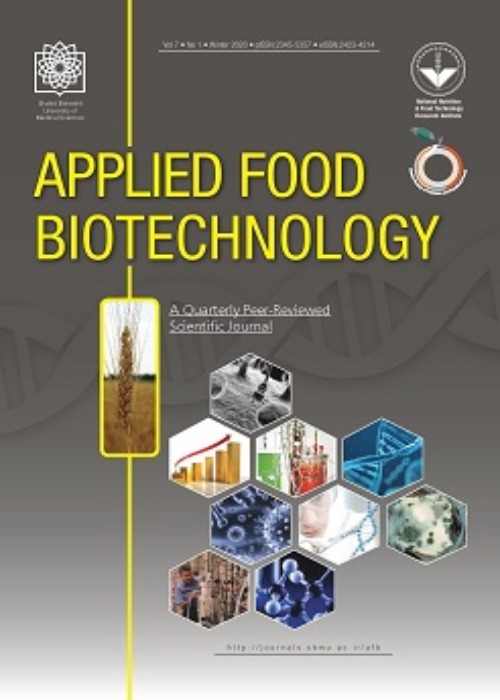The Staphylococcus aureus Exotoxin Recognition Using a Sensor Designed by Nanosilica and SEA genotyping by Multiplex PCR
Author(s):
H. Ahari , B. Akbari , Adreghani , V. Razavilar , A. Motallebi , S. Moradi , A.A. Anvar
Abstract:
Considering the ever increasing population and industrialization of the developmental trend of human life, we are no longer able to detect the toxins produced in food products using the traditional techniques. This is due to the fact that the isolation time for food products is not cost-effective, and even in most of the cases, the precision of practical techniques like bacterial cultivation and other techniques suffers from operator errors, or the errors of the mixtures used. Hence, with the advent of nanotechnology, the design of selective and smart sensors has turned into one of the greatest industrial revelations of the quality control of food products that, in few minutes time and with a very high precision, can identify the volume and toxicity of the bacteria. In this research, based on the bacterial antibody's connection to nanoparticles, a sensor was used. In this part of the research, as the basis for absorption for the recognition of bacterial toxin, medium sized silica nanoparticles of 10 nm in the form of solid powder were utilized with Notrino brand. Then the suspension produced from the agent-linked nanosilica, which was connected to the bacterial antibody, was positioned near the samples of distilled water, which were contaminated with Staphylococcus aureus bacterial toxin with the density of 10-3 molar, so that in case any toxin exists in the sample, a connection between the toxin antigen and the antibody would be formed. Finally, the light absorption related to the connection of antigen to the particle-attached antibody was measured using spectrophotometry. The 23S rRNA gene that is conserved in all Staphylococcus spp. was used as the control. The accuracy of the test was monitored by using the serial dilution (l0-6) of overnight cell culture of Staphylococcus spp. bacteria (OD600: 0.02 = 107 cell). It showed that the sensitivity of PCR is 10 bacteria per ml of cells within few hours. The results indicated that the sensor detects up to 10-4molar density. Additionally, the sensitivity of the sensor was examined after 60 days; by the 56 day, it had confirmatory results, which started to decrease after this time. Comparison of practical nanobiosensory method with the conventional methods including culture and bio-technology methods (such as polymerase chain reaction) confirmed its accuracy, sensitiveness and uniqueness. It also reduces the time from hours to 30 minutes.
Keywords:
Language:
English
Published:
applied food biotechnology, Volume:1 Issue: 1, Autumn 2014
Pages:
37 to 44
magiran.com/p1465774
دانلود و مطالعه متن این مقاله با یکی از روشهای زیر امکان پذیر است:
اشتراک شخصی
با عضویت و پرداخت آنلاین حق اشتراک یکساله به مبلغ 1,390,000ريال میتوانید 70 عنوان مطلب دانلود کنید!
اشتراک سازمانی
به کتابخانه دانشگاه یا محل کار خود پیشنهاد کنید تا اشتراک سازمانی این پایگاه را برای دسترسی نامحدود همه کاربران به متن مطالب تهیه نمایند!
توجه!
- حق عضویت دریافتی صرف حمایت از نشریات عضو و نگهداری، تکمیل و توسعه مگیران میشود.
- پرداخت حق اشتراک و دانلود مقالات اجازه بازنشر آن در سایر رسانههای چاپی و دیجیتال را به کاربر نمیدهد.
In order to view content subscription is required
Personal subscription
Subscribe magiran.com for 70 € euros via PayPal and download 70 articles during a year.
Organization subscription
Please contact us to subscribe your university or library for unlimited access!


